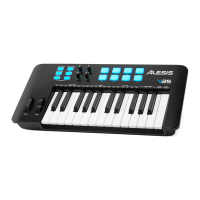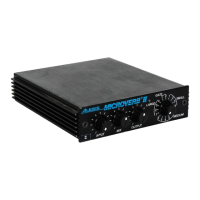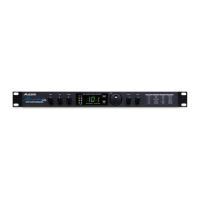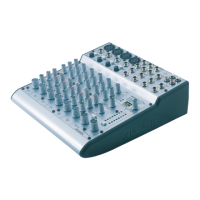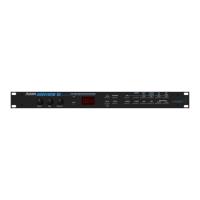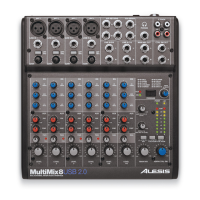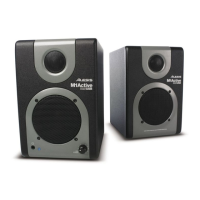Chapter 2
ALESIS ML-9600 REFERENCE MANUAL 1.00 3
NEW PLAYLIST EDIT
FEATURES
2.1 SEAMLESS "ADJACENT TRACK" TRANSITIONS
In version 1.xx software, two adjacent tracks would always play back with a miniscule
amount of silence between them, even if the start time of the second Track was equal to the
end time of the first Track. This was due to the way the MasterLink handled Audio Files and
Tracks in a playlist.
In Version 2.0, adjacent tracks play back with no audible gap; the Tracks will have adjacent
samples at the track boundary. This, however, is only true if neither of the adjacent tracks
have (real-time) Track DSP applied to them. If you have two adjacent tracks that must play
seamlessly over the track boundary and one or both have Track DSP applied, use the Render
DSP function (described in Section 3.4 of this addendum) to commit this DSP to the Audio File
(which will then turn off the real-time DSP for the track). This feature is very important when
considered with the next two features: Track Split and Track Join.
2.2 TRACK SPLIT
One of the most important features added to version 2.0 software was the ability to Split and
Join Tracks. This section describes a Track Split; the following section describes a Track Join.
A Track Split is simply the act of taking one Track (and its associated Audio File) and splitting
it into two Tracks (and two Audio Files). Track Splits can be useful in several ways:
• Inserting Track Markers into a long, continuous piece of audio, without interrupting the
audio flow.
• Breaking a long recording into discrete songs.
• Isolating regions of a song for re-sequencing.
• Isolating regions of a song for different DSP processing.
The point at which the track is split is determined by the TRACK START pointer, whose
operation is described in detail in section 4.8 of the MasterLink User's Manual, and in Section
2.5 of this addendum. Once the TRACK START point has been set, holding PLAYLIST EDIT
and pressing NEW TRACK will cause the Split Confirmation Screen to be displayed, an
example of which is shown in Figure 2.2.1.
Figure 2.2.1
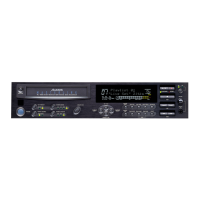
